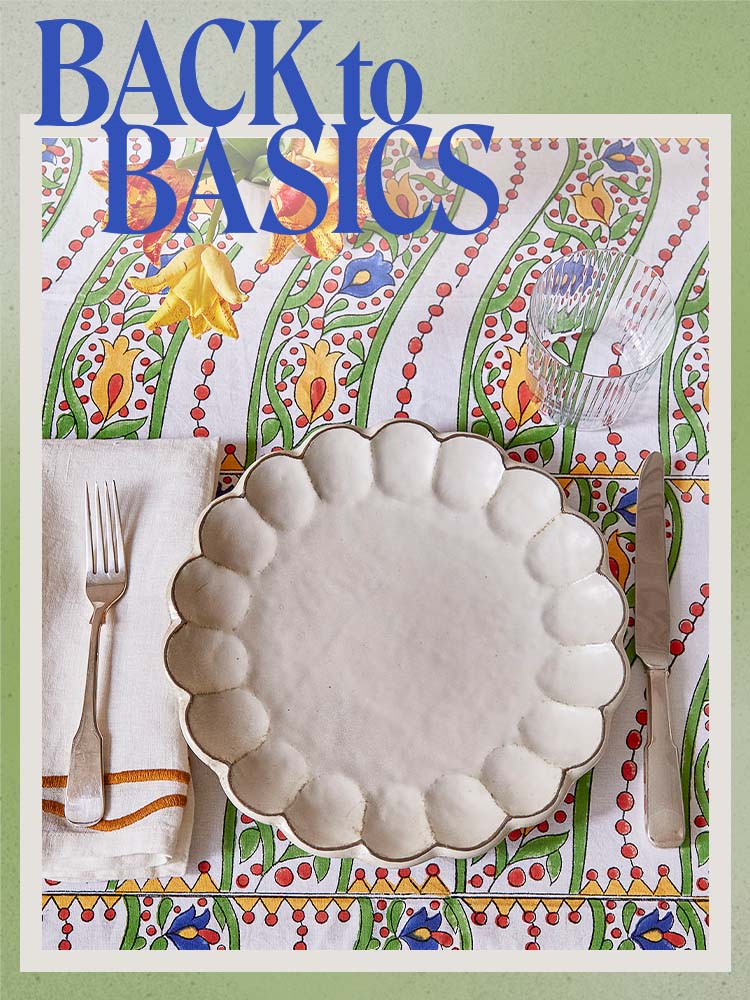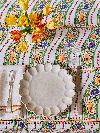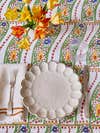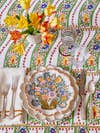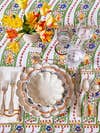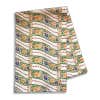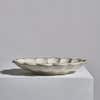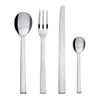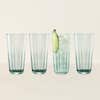Learn the Rules of How to Set a Table So You Can Break Them
No, your dishes and glassware don’t have to match.
Updated May 8, 2022 5:45 PM
We may earn revenue from the products available on this page and participate in affiliate programs.
Domino’s style director, Naomi deMañana, has a single piece of advice for anyone pondering how to set a table, whether it’s for a basic lunch, a casual family dinner, or a formal affair: Learn the rules first, then break them. The trick is to find that sweet spot between proper tableware placement and personal style. A successful setup is one that follows classic table-setting guidelines (the salad fork goes over there), feels inviting, is aesthetically pleasing, and incorporates your creativity. Here, deMañana guides us through three variations step-by-step.
How to Set a Table…
The Supplies
- Placemats (optional)
- Dinner plates
- Cloth napkins
- Salad plates (optional)
- Dinner forks
- Salad forks (optional)
- Spoons (optional)
- Soup spoons (optional)
- Soup bowls (optional)
- Dinner knives
- Water glasses
- Red and white wineglasses (optional)
- Dessert spoons (optional)
- Centerpiece (optional)
…When It’s a Regular Tuesday Night
Step 1: Set Out the Dinner Plates
If you’re using placemats, be sure to center the plates in order to avoid a setup that looks haphazard.
Step 2: Place Napkins to the Left of the Plates
Feel free to experiment here. DeMañana suggests sliding your napkins (we love these) under the plates, rolling them, or neatly placing cloths folded into thirds to the side or on top of the dinner plate.
Step 3: Lay Out the Flatware
Place a dinner fork on top of each folded napkin if that’s the route you chose. Otherwise, set the fork to the left of the plate directly on the table. Then put a dinner knife on the right side of the plate, sharp edge facing in. Make sure the bottom of the utensils and the plate line up evenly. (If you haven’t guessed by now, symmetry is the key to good tablescape design.) Pro tip: Rather than purchase each of these utensils individually, buy one of our favorite flatware sets.
Step 4: Sit the Drinking Glass Above the Knife
We like casual, multipurpose options that can be used for water or something stronger.
…When You’re Having a Casual Hang
Step 5: Add Salad Plates and Utensils
Layer the salad plate on top of the dinner plate. Instead of using a single set of matching dishes, deMañana set out vintage salad plates with yellow borders that nod to the napkin embroidery. “These complementary details are cute and eclectic, and they tie the look together without being too matchy-matchy,” she says. Then lay the salad fork to the left of the dinner fork. Place a spoon (for stirring or sipping a beverage) to the right of the knife at this point, too.
Step 6: Bring in a Wineglass
Station a wineglass—either red or white, depending on what you’re serving—above the plate and to the left of the water glass. “A formal setup typically has the glasses in a straight line from the plate—the water glass comes first, then the wine to its right,” deMañana explains. “But we liked putting the stemless water glass in front of the higher, stemmed wineglass. It’s more about how the arrangement creates a shape.”
…When You’re Throwing a Big Dinner Party
Step 7: Add the Soup Bowls and Utensils
Now we’re getting fancy. After you’ve finished your first course and cleared the salad plates and flatware, place a soup bowl on top of the dinner plate, then lay a soup spoon to the right of the knife.
Step 8: Add Desert Spoons and Another Wineglass
Situate the dessert spoon above the plate, making sure the handle faces the right side of the table. Sit a wineglass (white, if you already have red on the table) slightly above and to the right of the water glass. The three glasses should form a loose mini triangle. “We like mixing things up, so that may mean not using all the glasses from a single set, but getting out your special glasses,” says deMañana.
Step 9: Add Place Cards and a Centerpiece
Handwritten place cards on folded pieces of cardstock offer a personal touch. Center them in front of each place setting, directly above the bowl or the dessert spoon.
Step 10: Arrange Your Centerpiece
If your formal table setting includes a centerpiece, it doesn’t have to be fresh flowers. “Some people don’t even have a centerpiece or it’s just candles,” deMañana points out. “Items don’t always have to be there—it depends on your style.” Just make sure you can see over the vignette. “If you use backyard finds, like little sprigs, for example, keep the mass below the sight line,” she adds. Now we’re just waiting on an invite.
